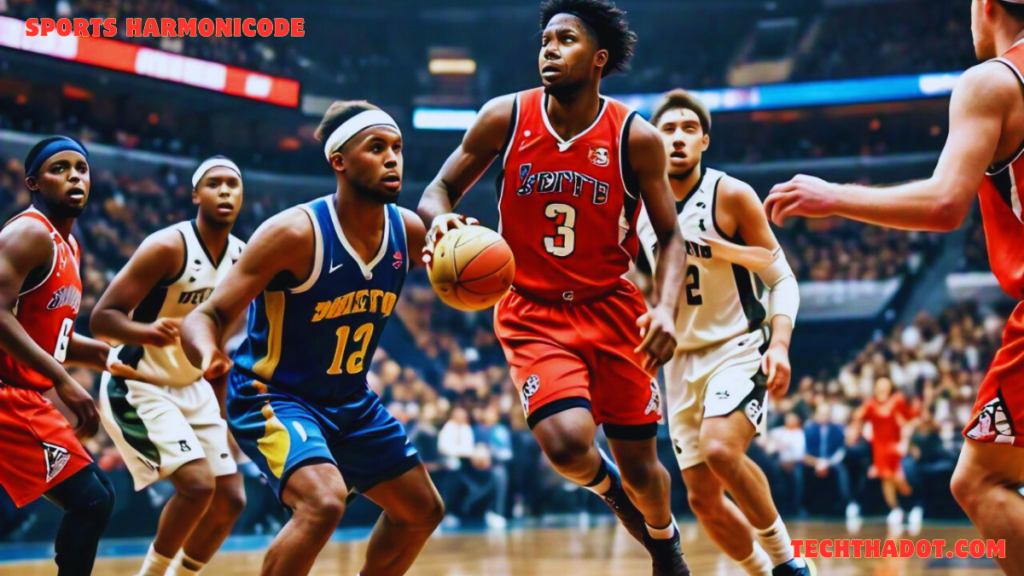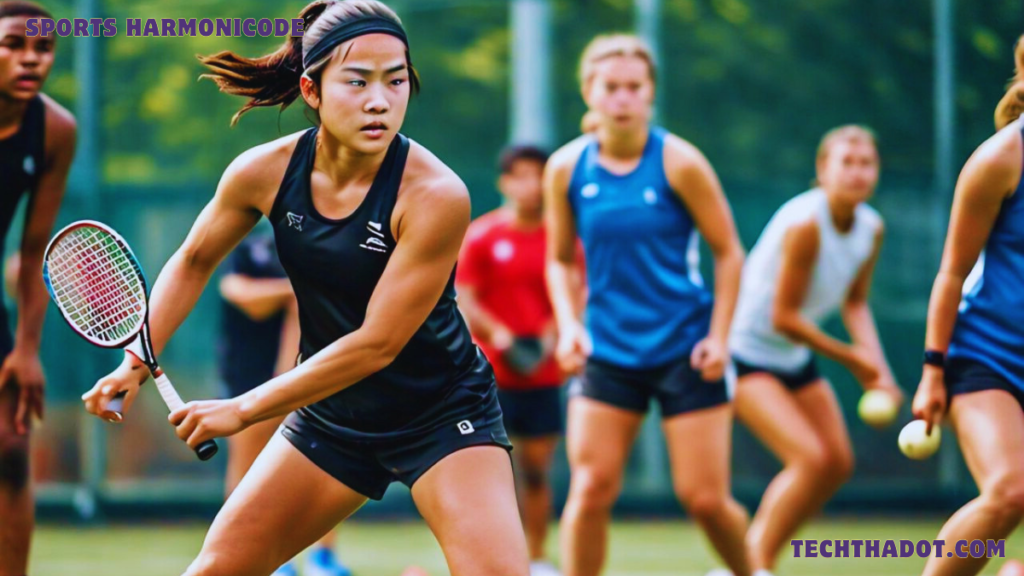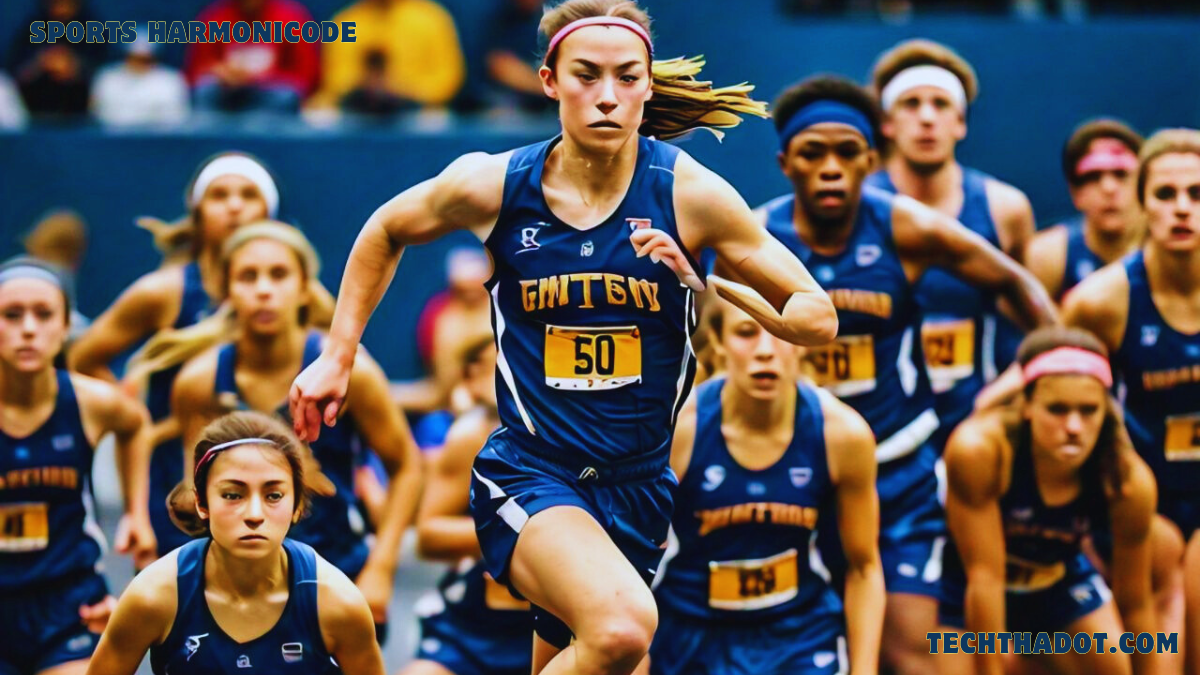I. Introduction
A. Definition of Sports Harmonicode
- Sports Harmonicode combines “harmony” and “code,” representing the application of harmonious principles and precise codes to enhance physical movements. This concept is based on the idea that natural, efficient, and balanced movements can be encoded and decoded using mathematical and scientific principles. Harmonicode sport involves leveraging these principles to achieve optimal balance, coordination, and efficiency in athletes’ movements.
- Application of “Harmonicode” in Sports Harmonicode in sports involves analyzing and optimizing athletes’ biomechanics to improve performance and reduce injury risk. By understanding the natural harmonic patterns in body movements, coaches and trainers can develop tailored training regimens that enhance an athlete’s capabilities. This approach not only focuses on improving physical performance but also on maintaining the athlete’s overall well-being.
B. Importance of Integrating Harmonic Principles in Sports Integrating harmonic principles in sports is crucial for maximizing athletic performance, preventing injuries, and ensuring long-term sustainability in an athlete’s career. By focusing on balance and coordination, athletes can achieve higher levels of efficiency and effectiveness in their respective sports. This holistic approach also helps in developing more resilient athletes who can maintain peak performance over extended periods.
C. Overview of the Paper This paper explores the concept of Sports Harmonicode, its origins, principles, applications, and technological integrations. It also examines case studies and future trends in this emerging field, providing a comprehensive understanding of how harmonic principles can revolutionize sports training and performance.
II. The Concept of Sports Harmonicode
A. Origins and Definition
- Historical Background of Harmonic Concepts Harmonic principles have roots in ancient philosophies and scientific theories, emphasizing balance and symmetry. Ancient Greek philosophers like Pythagoras explored the harmony of numbers and their application to physical forms. These concepts have evolved and are now being applied to modern sports science, integrating insights from biomechanics, kinesiology, and advanced computational models.
- Definition of “Harmonicode” Harmonicode sport refers to a systematic approach to analyzing and enhancing physical movements using harmonic principles. It involves a deep understanding of biomechanics and the natural patterns of motion to optimize athletic performance. This approach decodes the intricate patterns of human movement and encodes optimal strategies for improvement.
B. Principles of Harmonicode
- Harmony and Balance in Physical Movements Achieving harmony in physical movements involves ensuring that all parts of the body work together seamlessly. This requires a balance of strength, flexibility, and coordination, which can be analyzed and improved through harmonic codes. Harmony in movement is not just about aesthetics but also about efficiency and minimizing energy expenditure.
- Mathematical and Scientific Basis of Harmonic Codes Harmonic codes are grounded in mathematics and science, using algorithms and models to analyze and optimize movements. These codes help in identifying inefficiencies and areas for improvement in an athlete’s performance. The scientific basis includes understanding wave patterns, resonance, and symmetry in human movements.
C. Applications Beyond Sports While primarily applied in sports, harmonic principles can also be used in rehabilitation, dance, and other physical activities requiring precise movement and coordination. In rehabilitation, harmonic codes help in developing recovery programs that restore natural movement patterns. In dance, these principles enhance the fluidity and grace of movements.

III. Application in Sports Harmonicode
A. Enhancing Athletic Performance
- Techniques to Improve Balance and Coordination Various techniques, such as proprioceptive training, dynamic stretching, and plyometric exercises, can improve an athlete’s balance and coordination, leading to better performance. Proprioceptive training, for instance, enhances the body’s ability to sense its position and movements, which is crucial for maintaining balance.
- Case Studies of Athletes Using Harmonic Principles Successful athletes who have integrated harmonic principles into their training regimens often report significant improvements in their performance and reduced injury rates. Examples include elite gymnasts who achieve perfect routines through refined balance and coordination and runners who optimize their stride patterns for efficiency.
B. Injury Prevention
- Understanding Biomechanics Through Harmonic Codes By analyzing an athlete’s biomechanics, trainers can identify movements that may lead to injury and develop strategies to mitigate these risks. Understanding the interplay of forces and movements helps in designing exercises that strengthen vulnerable areas.
- Developing Training Programs that Minimize Injury Risk Training programs based on harmonic principles focus on strengthening supporting muscles and improving overall movement patterns to prevent injuries. These programs include exercises that enhance joint stability, muscle balance, and flexibility.
C. Sports Training and Coaching
- Incorporating Harmonic Principles into Training Regimens Coaches can incorporate harmonic principles into daily training routines, emphasizing balance, coordination, and efficient movement patterns. This involves not just physical training but also educating athletes about the importance of harmonic movements.
- Tools and Technologies for Measuring Harmonic Balance Advanced tools and technologies, such as motion capture systems and wearable sensors, can measure an athlete’s harmonic balance and provide valuable feedback for improvement. These tools offer precise data on movement patterns, allowing for detailed analysis and targeted interventions.
IV. Sports Harmonicode Case Studies
A. Individual Sports
- Gymnastics Gymnasts benefit from harmonic principles by achieving better balance and fluidity in their routines. Detailed analysis of their movements helps in refining techniques to achieve perfect scores.
- Figure Skating Figure skaters use harmonic codes to refine their movements, resulting in more graceful and precise performances. Techniques to optimize spins, jumps, and transitions are developed through harmonic analysis.
- Martial Arts Martial artists apply harmonic principles to enhance their coordination and power, improving their techniques and reducing injury risks. Harmonic codes help in developing efficient movement patterns for strikes and defensive maneuvers.
B. Team Sports
- Soccer players improve their agility and coordination through harmonic training, leading to better on-field performance. Techniques to enhance dribbling, passing, and shooting are developed using harmonic principles.
- Basketball players use harmonic principles to enhance their shooting accuracy and defensive movements. Analyzing the biomechanics of shooting helps in developing more consistent and precise shots.
- American Football Football players benefit from harmonic codes by optimizing their running and tackling techniques. Techniques to improve speed, agility, and strength are developed through harmonic training.
C. Analysis of Performance Improvements and Outcomes Case studies consistently show that athletes who incorporate harmonic principles into their training experience significant performance improvements and lower injury rates. Detailed analyses of these improvements highlight the effectiveness of harmonic training.
V. Sports Harmonicode Technological Integration
A. Wearable Technology
- Devices that Measure Harmonic Balance and Movement Wearable devices, such as smartwatches, motion sensors, and biomechanical suits, track an athlete’s movements and provide real-time data on their harmonic balance. These devices offer precise measurements of movement patterns, balance, and coordination.
- Data Analysis and Feedback for Athletes These devices offer detailed analysis and feedback, allowing athletes to adjust their training and improve their performance. Data collected from these devices is used to develop personalized training programs.
B. Virtual Reality and Simulation
- Training Programs Using VR for Harmonic Movement Practice Virtual reality (VR) provides immersive training environments where athletes can practice harmonic movements in a controlled setting. VR simulations allow for repetitive practice without the physical strain of real-world training.
- Case Studies and Effectiveness Studies show that VR training programs are effective in improving athletes’ coordination and performance. Athletes who use VR for training report better understanding and execution of complex movements.
C. Software and Apps
- Tools for Coaches and Athletes to Track and Improve Harmonic Balance Software and apps offer coaches and athletes tools to monitor and enhance Sports Harmonicode balance, providing actionable insights. These tools include applications that analyze running patterns, motion analysis software, and training apps.
- Examples of Current Technologies Examples include apps that analyze running patterns, wearable sensors for tracking movements, and software for biomechanical analysis. These technologies provide detailed feedback and allow for continuous improvement.

VI. Sports Harmonicode Future Trends and Research
A. Emerging Technologies in Sports Harmonicode
- Innovations in Measurement and Analysis Tools Emerging technologies, such as AI, machine learning, and advanced sensors, offer new ways to measure and analyze harmonic movements. These technologies provide more precise and detailed insights into athletes’ performances.
- Potential Future Applications Future applications may include more precise training programs, personalized feedback systems, and improved injury prevention strategies. Innovations in AI and machine learning will allow for more accurate analysis and predictions.
B. Ongoing Research and Development
- Current Studies in the Field Ongoing research explores the effectiveness of harmonic principles in various sports and their impact on performance and injury prevention. Studies are being conducted to understand the full potential of harmonic codes.
- Areas Needing Further Exploration Further research is needed to understand the full potential of harmonic principles in sports and to develop new applications and technologies. Areas such as personalized training, injury prevention, and rehabilitation are being actively explored.
VII. Conclusion
The integration of harmonic principles through Sports Harmonicode offers a promising approach to enhancing athletic performance, preventing injuries, and revolutionizing sports training. By leveraging advanced technologies and scientific principles, athletes and coaches can achieve new heights in their respective fields. The future of sports training lies in the harmonious integration of these principles, leading to more efficient, effective, and sustainable athletic performance.
